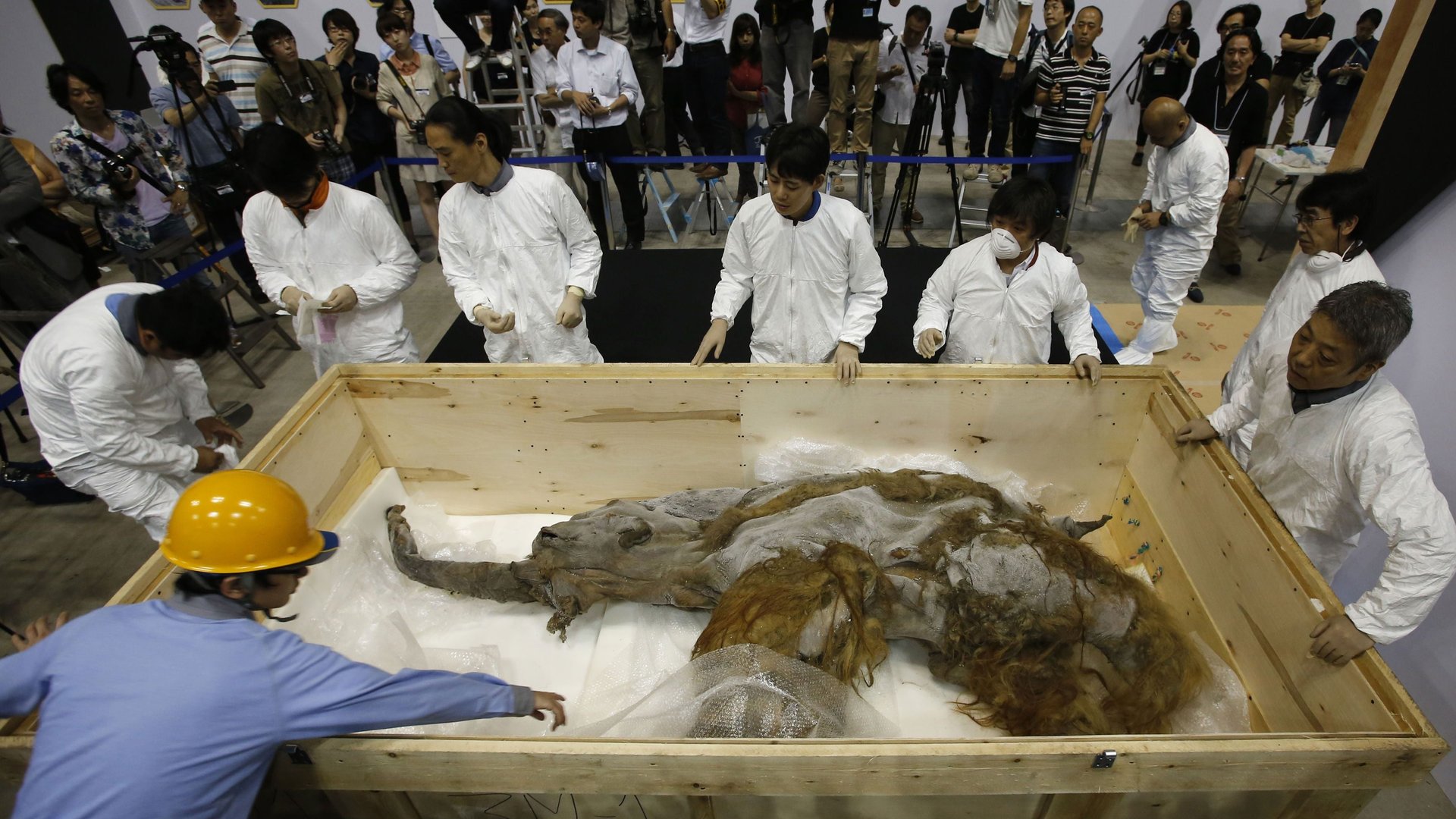Scientists plan to resurrect the woolly mammoth, Jurassic Park-style
Scientists may finally have the means to clone a 40,000-year-old woolly mammoth. But will they have the gall?


Scientists may finally have the means to clone a 40,000-year-old woolly mammoth. But will they have the gall?
“Buttercup,” the mammoth in question, was found in Siberia last year, impeccably preserved in snow and ice. Excavators extracted vials of liquid blood from the carcass and now researchers at the South Korean biotech company SOOAM are testing it for a complete set of DNA. If a complete set can’t be found, scientists could map specific mammoth traits—like their tusks and hair—onto an existing elephant genome.
Cloning an ancient beast comes with some ethical baggage, though. To start, an elephant would have to act as the surrogate mother. Birthing a woolly mammoth could damage and potentially kill the elephant, and it’s likely scientists would have to sacrifice several female elephants before getting it right. And that could be all for naught, as there’s no guarantee the mammoth would even survive for very long.
If a cloned mammoth is successfully birthed, it likely would not have much company—and woolly mammoths were apparently very social creatures. It no doubt would be subjected to a good number of experiments. And it presumably would be kept in a lab or paraded around for all the world to see, never getting to live in its natural habitat. The dinosaurs in Jurassic Park had it way better than that.